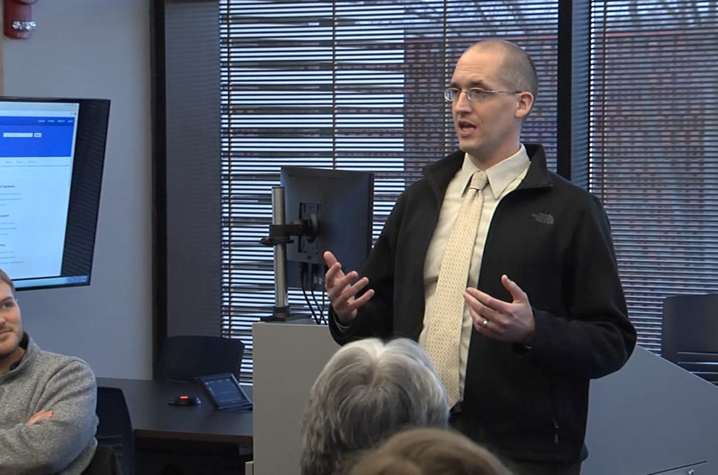New Study Examines Ways to Improve Cancer Literacy in Kentucky Students

A new study led by University of Kentucky Markey Cancer Center researchers suggests that implementing cancer education curricula in middle and high schools may improve cancer literacy in Kentuckians and ultimately help reduce cancer rates.
The study, published in the Journal of Cancer Education, included 349 middle and high school students in Kentucky. Students were given a baseline test to determine their cancer literacy, followed by a cancer education presentation. Following the presentation, students were tested again. Results showed that the scores for all individual items increased after the intervention, and the average test scores improved by 30%.
The low levels of cancer literacy pre-intervention weren’t too surprising, according to Nathan Vanderford, assistant director for research at Markey and director of the Appalachian Career Training in Oncology (ACTION) Program. Having grown up in rural Tennessee, Vanderford recalls that his early educational experiences didn’t include much information on the topic.
“Thinking back on my own pre-college education, I do not recall learning in-depth about cancer in school,” Vanderford said. “From that perspective, the lower levels of cancer knowledge these students displayed at baseline are not too surprising. At the same time, given the increased information age we live in, there was some thought that perhaps students’ baseline levels would be higher.”
Kentucky is home to the highest overall rates of cancer incidence and death in the country. In the Appalachian region of the state, this problem is even more pronounced. Among many other factors, the lack of health literacy plays a part in the state’s poor health. Research shows that people with inadequate health literacy are less likely to participate in preventive measures (such as cancer screenings, one of the best ways to reduce cancer rates) and making healthy lifestyle choices.
Based on their study, Vanderford notes that implementing cancer education into the existing curriculum for middle and high school students could pay off in the long run by encouraging change in many behaviors that lead to higher cancer rates.
“Youth represent a vulnerable population that is at risk for beginning behaviors – like smoking – that increase cancer risk,” Vanderford said. “At the same time, this is a malleable group that may be more positively influenced by cancer prevention and control strategies. Our results highlight opportunities we have to provide cancer education material to students in a way that will greatly affect their cancer knowledge, which could result in lowering cancer risks through increased cancer prevention/control behaviors.”
This study was supported by UK’s ACTION Program and the Cancer Center Support Grant both funded by the National Cancer Institute. Lauren Hudson, a UK undergraduate student who is first author of the study, was supported by a summer research fellowship funded by the UK Office of the Vice President for Research and the Office of Undergraduate Research.
More from this series Research Priorities - Cancer
Credits
Allison Perry (Public Relations and Strategic Communications)


